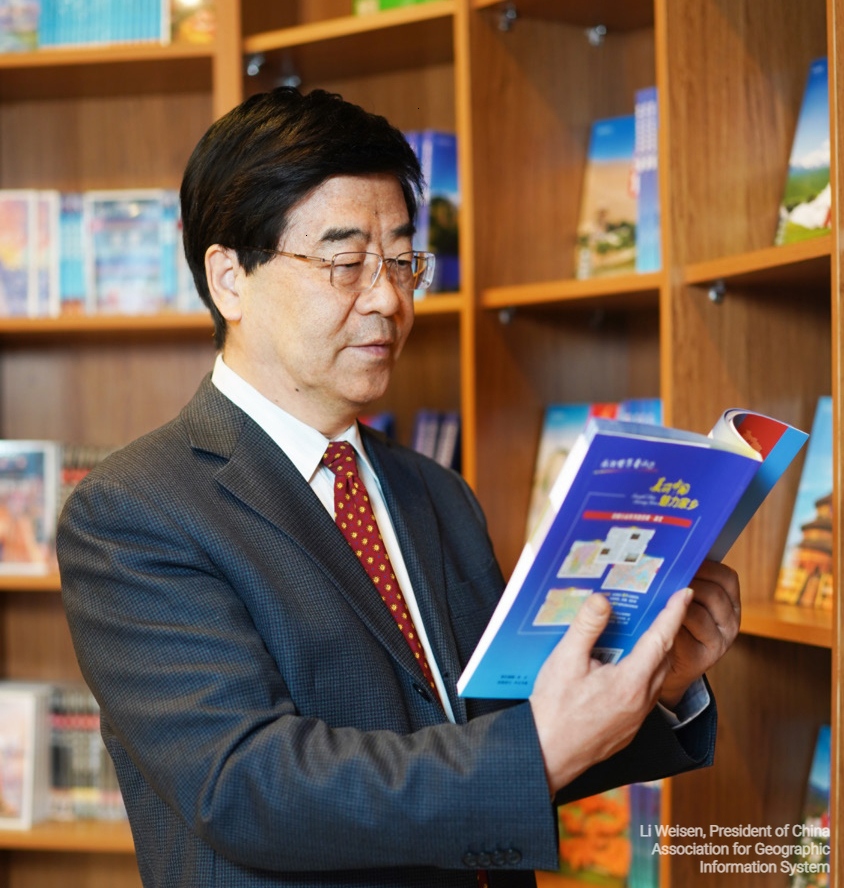In a recent interview with SuperMap, Li Weisen, President of China Association for Geographic Information System, shared his perspectives on the current development circumstance of the geospatial information industry in China. Li also presented some views on the impacts of technology hotspots like metaverse on the geographic information industry and proposed some suggestions for companies about how to respond to such emerging technologies.
(The following is an excerpt from the interview.)
The metaverse is not an entirely brand new concept, and there is not yet an agreed precise definition. Some see the metaverse as the ultimate evolutionary version of social networks, the online parallel world that is more technologically advanced and closer to reality. The metaverse cannot be divorced from the real world. It is parallel to the real world, connected to it, but separate from it, where people can socialize and work. Some say the metaverse is the highest form of human digital existence. Others say that the metaverse is the ultimate form of the Internet, providing a new path for the final digital transformation of human society, showing a new era that has the same significance as the Age of Discovery, the Age of Industrial Revolution, and the Age of Aerospace. There is even such a voice that with the development of technology, under the concept of the metaverse, we could one day create virtual worlds that are blended with the real world. Of course, there are also views that the metaverse is just a new wind favored by capital, a concept hype, and a bubble that needs precaution.

A team from Tsinghua University has suggested an answer, defining the metaverse as a new type of Internet application and social form that integrates various new technologies featuring the blend of the virtual and real. Based on extended reality (XR, including virtual reality, augmented reality, and mixed reality), it can provide an immersive experience. Based on digital twin technology, it can generate a mirror image of the real world. Based on blockchain technology, it can construct the economic system. It closely integrates the virtual world and the real world in the economic system, social system, and identity system, and allows each user to produce content and edit the world.
The impacts of the metaverse on the real world, the Internet, etc., are still being explored. Even so, it has gained attention and input from many areas of society, especially well-known enterprises across the globe. Geographic information technology such as electronic maps and GIS technology, especially three-dimensional GIS technology, plays a huge role in understanding, describing, displaying, managing, and analyzing the real world. These technologies will also play a significant role in the virtual worlds constructed by the metaverse. The new generation of 3D GIS technology of SuperMap platform software has the basic functions of constructing the base of the metaverse, such as supporting some VR/AR/MR head-mounted display, providing tools for cross-border integration of 3D GIS, and game engine. In the real world, we have become inseparable from geographic information technology and so do we in the virtual world.
Seeing from the development history of geographic information technology, each birth of new information technology will usher in the advancement and even transformation of technology and application. Enterprises seizing the opportunities brought by innovative technology will usually get development dividends in product research and development and then earn market returns. However, new technologies vary in the development path, development time, and impact mode. What really matters is the enterprise’s ability to understand, master, and use new technology. Geographic information enterprises must pay attention to the innovative technologies in various related fields and follow up the research in time. However, they should not follow the trend of hyping concepts and instead, should carry out solid scientific and technological innovation. To achieve these, enterprises also need to have a good talent reserve, innovation mechanism, perform well in and dare to make full use of the capital market, increase investment in scientific and technological innovation. Also, they should do better in sharing resources, complementing advantages and developing together with scientific research institutions, universities and other partners.
Source: SuperMap Communications (Chinese Version)